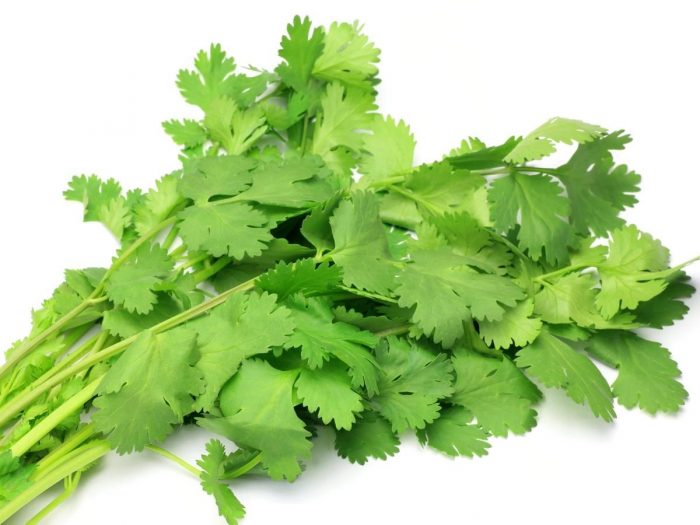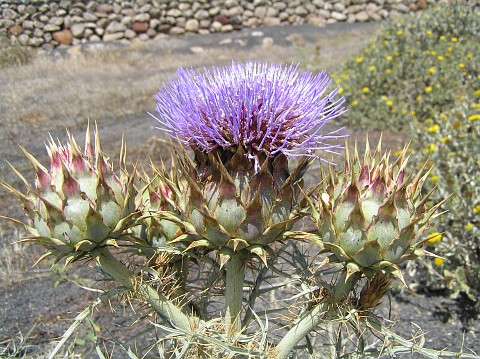Asparagus (Aspargus officinalis L) is a monocotyledonous plant, perennial, dioecious (separate male plants female plants), belonging to the lily family. She is a native of Europe and Asia. The culture is practiced in Morocco in Marrakech regions, Tadla, Casa, El Jadida, Berkane, Tan Tan, Rabat and Imouzer of Kandar. Asparagus is a vegetable rich in fats, sugars, crude fiber, Ca, P, Fe, Vitamin B1, B2, C. Green asparagus has a stronger flavor than white asparagus. Shoots (consumed part, young stems) are prepared vinaigrette, herb omelette, with tomato sauce and cream. Male plants appear to have greater longevity than the female plants. More robust, they would eliminate the weaker plants by vegetative competition. The life of a aspergerai is greatly influenced by the severity of the harvest (10-20 years).
Soil and climatic requirements:
In temperate climates and under the influence of temperature and soil water status, asparagus adopt its late autumn activity to resume in mid-March - mid-April. In hot climates, asparagus believes all year. But there will be an activity stop in case of drought. Asparagus is thought likely to start its activity when the temperature exceeds 10 ° C, the optimum is 18 ° C. Asparagus is an extremely hardy plant, resistant to cold (cold season crop), but the growth rate increases with temperature. The daily growth of the rods is about 1.8 cm at 13 ° C, it passes cm 3 at 17 ° C. Photosynthesis begins only two months after the entry into operation of the root system. Indeed, the harvest of the shoots deprive the plant of its leaf organs. Under these conditions, the cycle is reduced photosynthesis a period at least equivalent to that of harvest (60 days).
Asparagus is a very versatile plant to adapt to different soil types. But we seek preferably a permeable soil, light, deep and easy warming. In the basement, in general, it is accepted that the water must be below a depth of 0,60m. The particularly interesting type of soil appear to be a loamy soil. The optimum pH is 6,8 7,5 (spears sought lovely pink color). Asparagus is very tolerant to the salinity of the irrigation water (3 to 5 g / l).
Varieties:
The main varieties that give quality of shoots (straightness, lack of grooves, not backed bud, closed apex) were obtained by dual hybridization (Diana, Juno and Minerva, ACR) or in vitro cloning (Aneto, Desto, Cito, Steline, Jacqma 2001 Jacqma 2002 Dariana, Cipres). The in vitro cloning allows uniform vegetative propagation. In a aspergerai, greater precocity we can notice and improved productivity of the male plants. Breeders have therefore sought entirely male hybrids.
Land preparation and planting:
Site preparation began in the autumn by a deep plowing (30- 35 cm). It's time to bury basic fertilizer, manure and potassic and phosphoric fertilizers. Nitrogen fertilizers will be incorporated during the preparation of the soil in the spring, before shelving the field. A few days before the final installation of the plants, one must make a second plowing 20cm, followed by harrowing. Then we dig trenches or furrows for planting claws definitive establishment. The distances between the trenches or furrows depend on the orientation of production (white spears, star or green). Normally, the distance between the planting lines are: (1) For the production of green shoots 100 cm. (2) For the production of white shoots 150 cm. The distance between plants was 45 to 50 cm. The trenches or furrows are dug to a depth of 25-30cm. It is always best to bury the bottom of some manure decomposed trenches before planting. It is not advisable to dress the roots of the claws. To avoid contamination of the claws by Rhizoctonia, we proceed to disinfection with bleach (diluted to 12 °) for 15 minutes. The claws are generally placed flat, roots oriented mostly in the length of the row. The claws are covered with 5 to 6 cm of soil brought back with a hoe and packed on the sides. We absolutely will plant 1 year claws, more apt to recovery than older dogs.
Irrigation and tending:
The growing water needs are at 12-15000 m 3 / ha / cycle. Production of aspergerai depends on the quality of the maintenance in the first three years after planting. The first year (1 Shoot era), use is made of regular hoeing and weeding. This work is important because they allow the asparagus to start vigorously avoiding weed competition. Chemicals can be used for weed control as cynamide Ca, diuron or Metribuzin 0.5kg ai / ha. Autumn, November-December, stems asparagus dry out, they are cut to 5 cm above the ground, is burnt or is buried in the soil. During the vegetation and in winter or practice of cover crops between rows (Radis, Beans, Peas, Garlic, Onion, Turnip Lettuce ... etc.). The second year (second growth), it brings NPK fertilization, we continue to be irrigated, and chemically weeded before the release of shoots. In the fall, cut and burn the tops dry. The third year we made two to three buttages. From the fourth year the maintenance aspergerai resembles that of an orchard (irrigation, fertilization, weeding ...)
Fertilization:
The basic fertilizer is normally made up of: (1) Farm manure, rotted 40-60 tonnes / ha (2) Phosphorus 100 kg / ha and (3) Potash 180kg / ha. Asparagus primarily reacts to a good nitrogen and potassium diet. Boron and Magnesia must be made during the culture. Asparagus needs a good Ca / P ratio of about 3/1. Manure cover can be: (1) 1st year (first growth): 30-50 kg / ha N; (2) 2nd year (2nd push): 60-80 kg / ha N + 60 kg / ha P2O5 + 100 kg / ha K2O. (3) from the 3rd year: 100-180 kg / ha N + 50-60 kg / ha P2O5 + 150-200 kg / ha K2O.
Pest control:
The main diseases of asparagus are rot Claws (Rhizoctonia violacea) (Claws covered with purplish red felting causing yellowing and destruction of plants). At the first harvest, the shoots affected are more or less deformed, harden and become bitter. The control means are choosing a healthy soil and healthy claws. Can also disinfect shoe with bleach at 12 ° or with methyl bromide at 120 g ai / m 2.
Rust (Puccinia asparagi) (pustules yellowish, reddish and black on the aerial parts). To fight against this disease, in October, cut and burned all the stems. It performs preventive treatments Maneb or Mancozeb at.
The sheath caterpillar (hypopta oaestrum) (The roots are eaten by larvae). For the fight, it picks up and burning the sleeves to avoid the spread havoc, it also deals with insecticides using Azinphos (MA 40g / hl), Fonthion (100 g ai / hl).
The beetles asparagus (asparagi Crioceris) are beetles (stems and other aerial organs are eaten). For the fight in June, treated with malathion and parathion 75 g 30 g ai / hl.
Fly asparagus (Platyparea poeciloptera) (we observe galleries in the stems and stalks, this results in drying and deformation of the shoots). For the fight in October, cut the stalks and burn. There must be sprayed with dimethoate products 30 g ai / hl and Formothion 50 g ai / hl. (3 to 4 treatments).
Seedcorn maggot fly or shoot (Phorbia platura) (larvae attack shoots into the ground, causing the curvature of the shoots, stems can be observed corkscrew with rot and spears become bitter). For the control, treating the soil after the first hilling in granulated chlorvinphos (5 kg ai / ha) and MA trichloronate to 2.5kg / ha.
The larvae of beetles (Taupins) attack the root system. Treat the soil before planting with parathion.
Harvesting, maintenance of aspergerai postharvest, storage and packaging:
The harvest lasts 2-4 weeks depending on plant vigor, as from the third to fourth year. After harvest, perform the following work: intake of nitrogen fertilization (100 units), any flattening of culture, chemical weeding, fall, cut and burn and then buried dry tops, organic manure input (manure , night soil) and protection against rust fly and asparagus beetles.
In the fourth year, the same tillage is practiced, and it provides the same manure. It can be a plastic mulch preceded by a chemical weed control (on fresh soil). On about 60 days are harvested. Harvest date varies according to climatic conditions in April until June (in Agadir in February-March). It can start in 3rd year shoot, but harvest only 2-3 shoots per plant not to tire the plant. The normal harvest starts from the 4 th year.
Picking green shoots poses no problem, the shoots are cut when they reach a length of 20 to 22cm, while for white or pink sprinkles, you have to gather before the appearance of the apex of the shoot overground (the stalk being mounded); in hot weather, this crop requires daily passes with the presence of 5 to 6 people per hectare during the full harvest.
The yield and quality of production depend on the variety, the age of the aspergerai and care that is provided. In general, high culture were harvested 5-6 T / ha. The yields begin to decline as early as the 9 th year. The shelf is necessary because asparagus spears tend to lignify quickly enough. Conservation is to be in a controlled atmosphere from 13 to 15% CO 2 (+ 2) to (3) ° C or in a cold room at 4 ° C and 90% relative humidity. For short-term storage (48 hours), it stores the bulk asparagus in ventilated boxes, bathing in fresh water. The asparagus are cut to the regulatory dimension "Export", with a length between 12 and 22 cm and a diameter between 10 and 16 mm. The shoots are classified into 3 categories: (1) Extra or better: Length 17 to 22cm, diameter 12-16 mm (2) Category I or Good quality: Length as to the quality Extra; diameter 10-16 mm (3) Category II or quality Merchant: Length 12-22 cm not bundled asparagus; minimum 10mm diameter. The shoots are placed in bunches of 0.5, 1 or 2 kg and packed in cardboard boxes or wooden crates.
Agronomic and Veterinary Institute Hassan II













